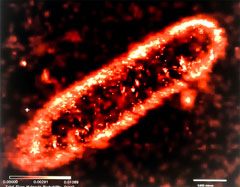February 22, 2019
K-State team discovers universal fluorescent sensors to characterize infectious bacteria
Submitted by Biochemistry and Molecular Biophysics

By creating fluorescence decoy, or FD, sensors that measure the binding of small molecules in solution, Kansas State University researchers in the biochemistry and molecular biophysics department found new approaches to characterize, and discover antibiotics against dangerous bacterial pathogens. The research, "Universal Fluorescent Sensors of High Affinity Iron Transport, Applied to ESKAPE Pathogens," was published in the Journal of Biological Chemistry.
The authors of the paper are K-State researchers Somnath Chakravorty, Yan Shipelskiy and Aritri Majumdar; doctoral students Ashish Kumar and Taihao Yang; research professor Salete Newton; and university distinguished professor Phillip E. Klebba. Former K-State research professor Brittany Nairn, now an assistant professor of biological sciences at Bethel University, also was a member of the study.
The research focused on the ESKAPE pathogens, a group of bacteria that are named in part from their ability to escape commonly used antibiotics. ESKAPE bacteria are frequently responsible for antibiotic-resistant infections. The K-State team created fluorescent sensors that monitor high-affinity binding reactions and used them to observe iron acquisition by the ESKAPE organisms.
By attaching fluorescent probes to living cells or purified proteins, they created light-emitting sensors that detected small iron-containing molecules called siderophores. Such sensitive assays of biochemical, microbiological or clinically important compounds are valuable for both basic research and antibiotic discovery. The new sensors enable accurate measurements of iron acquisition by almost any type of cells. The team assessed the efficacy of their genetically engineered FD sensors by characterizing iron uptake in the ESKAPE bacteria: the sensors were universally effective in observing iron acquisition by all organisms in that group, and they also worked in high-throughput screens for chemicals that block iron uptake.
Klebba said, "... FD sensors will facilitate the discovery of chemicals that inhibit bacterial membrane transport, that may constitute new antibiotics."
The fluorescent nature of the sensors both heightens their sensitivity and simplifies experiments with them.
*Image courtesy of the Advanced Imaging Center at HHMI Janelia Farms, Ashburn, Virginia.
